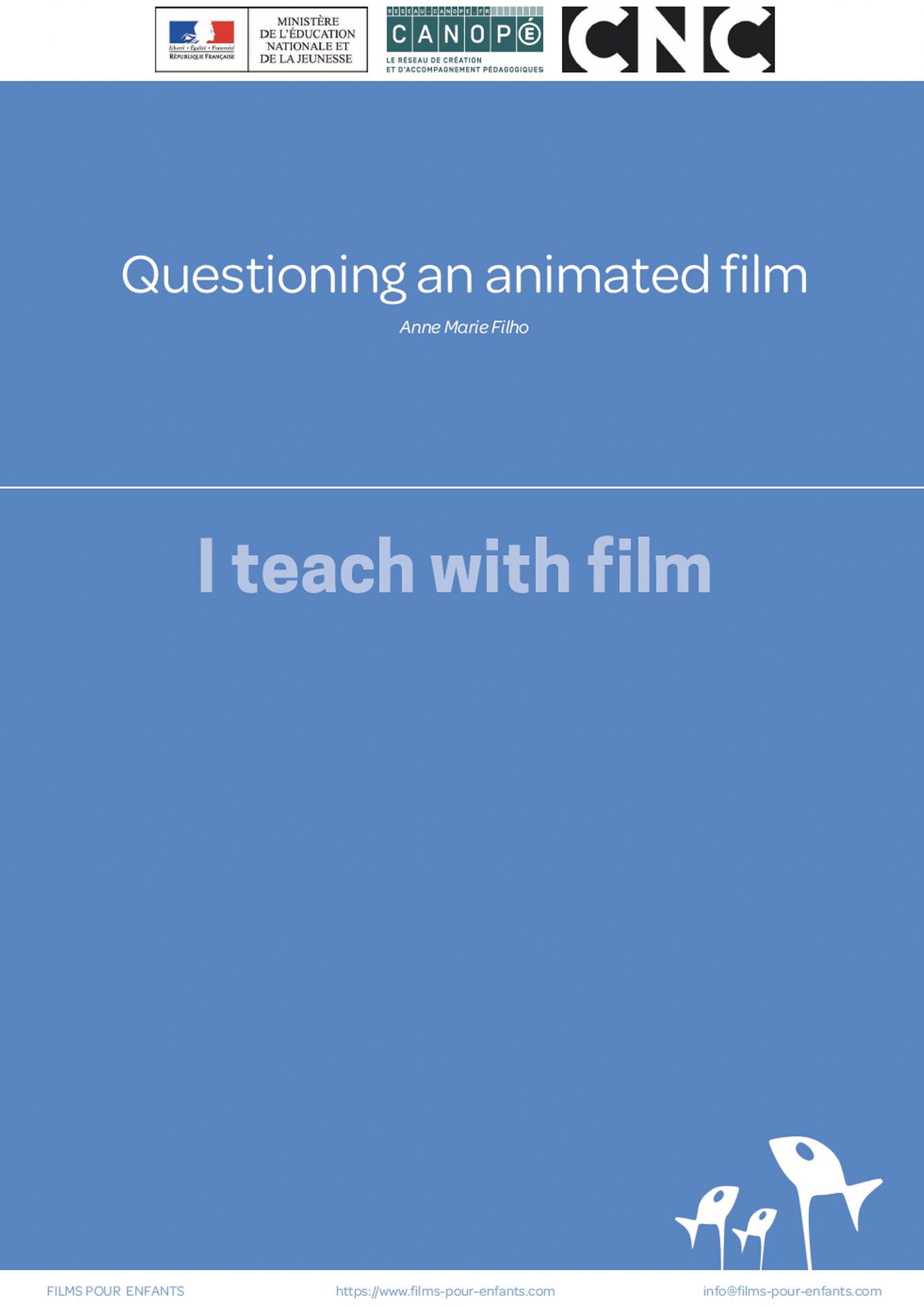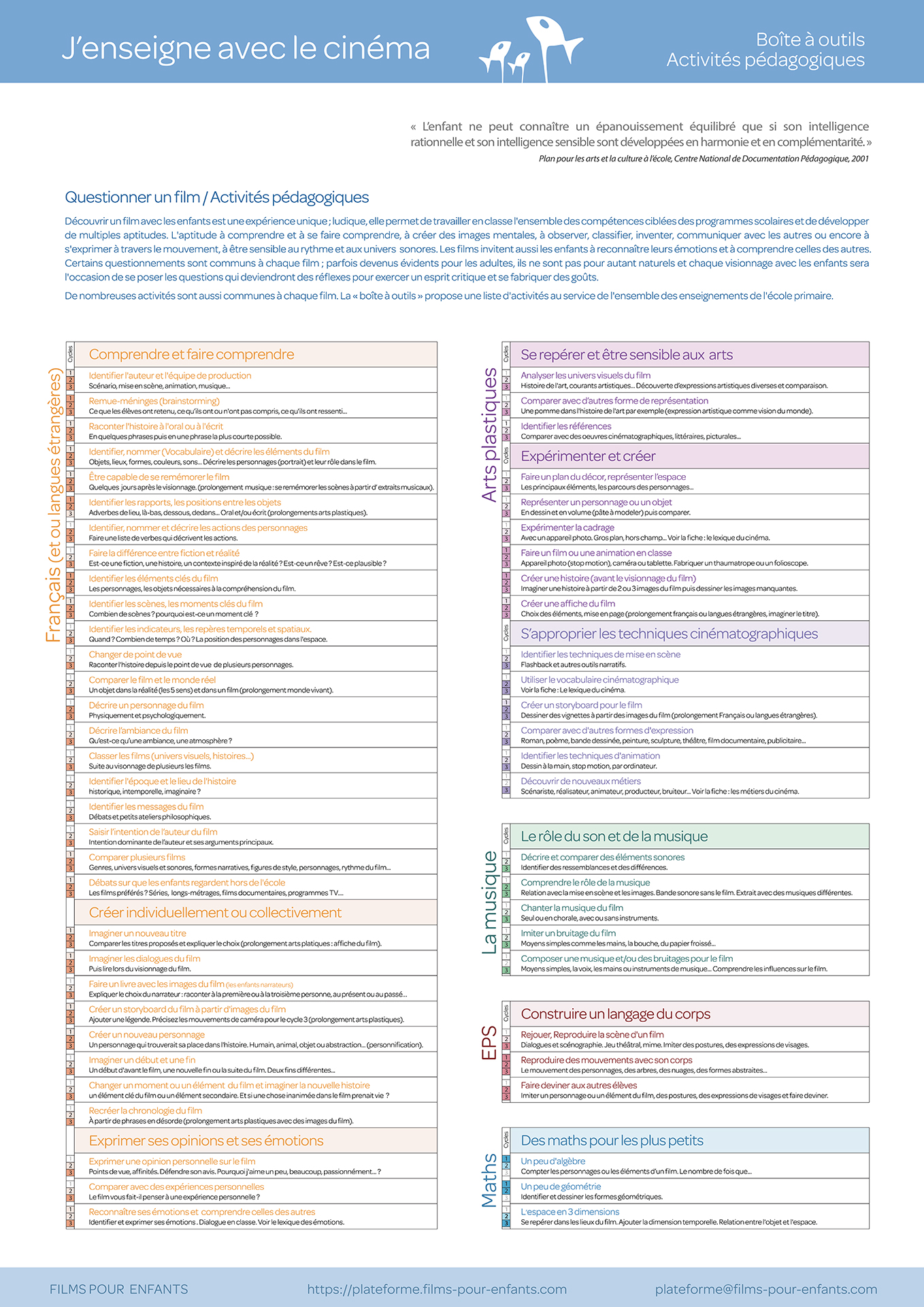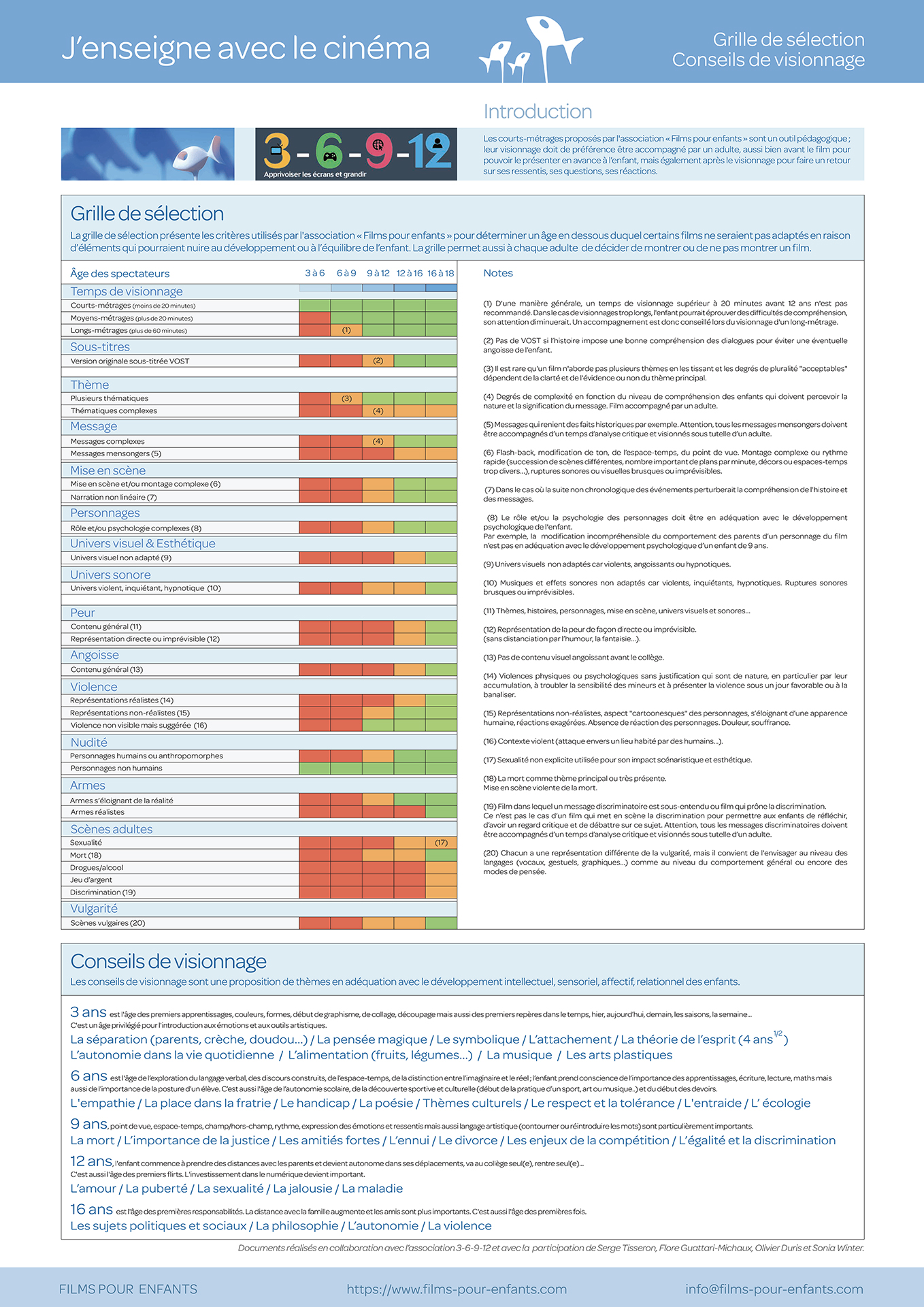I teach with the cinema
How to create the conditions for the progressive acquisition of a method, of autonomy?
Questioning an animated film
How can we create the conditions for the gradual acquisition of a method, of autonomy, including by gradually making pupils aware of the existence of invariants in their observations?
While adapting to their age and level, it is the teacher's responsibility to invite students to reflect on the strategies they use to question, analyse and understand, so that they can criticize them, assimilate them, be able to appropriate them, reuse them and develop them.
The screening of an animated film should enable pupils to encounter a work, to question it, to formulate a critical judgement, to express an opinion, an argued point of view, to debate, to compare, to put into perspective, to build links with other works, other arts, other media which have dealt with the same subject. It is thus an opportunity for pupils to acquire knowledge and build skills that they can put to the test at other times. Translated with www.DeepL.com/Translator (free version)
Anne-Marie Filho, honorary school inspector, illustrates this point using Risa Kimpara's film Rain and Fish.
Download the Questioning a film file...
Generic educational activities
List of activities and questions common to each film
Discovering a film with children is a unique experience; it is fun and allows all the targeted skills of the school curriculum to be worked on in class and multiple skills to be developed. The ability to understand and to be understood, to create mental images, to observe, to classify, to invent, to communicate with others or to express oneself through movement, to be sensitive to rhythm and to sound worlds. Translated with www.DeepL.com/Translator (free version)
The films also encourage children to recognise their own emotions and understand those of others.
Some questions are common to each film; sometimes they become obvious to adults, but they are not natural and each viewing with the children will be an opportunity to ask questions that will become reflexes for exercising a critical mind and developing tastes. Many activities are also common to each film. The "toolbox" offers a list of activities for all primary school lessons.
Download the Toolkit...
Selection grid and viewing tips
The selection grid, drawn up in collaboration with the 3-6-9-12 association and Serge Tisseron, patron of the Films pour enfants association, presents the criteria used by the Films pour enfants NPO to determine an age below which certain films would not be suitable due to elements that could be harmful to the child's development or balance.
Viewing time, theme, message, setting, characters, visual & aesthetic universe, sound universe...
The grid also allows each adult to decide whether or not to show a film.
The viewing tips are a proposal of themes in line with the intellectual, sensory, emotional and relational development of children.
What topics should be discussed with children aged 3, 6, 9, 12 and 16?
Download the selection grid...






